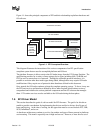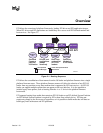
Extensible Firmware Interface Specification
1-8 12/01/02 Version 1.10
necessary to discover and configure platform resources. Again, this philosophical choice
for the design of the specification is intended to keep barriers to its adoption as low as
possible.
1.4 Target Audience
This document is intended for the following readers:
• IHVs and OEMs who will be implementing EFI drivers.
• OEMs who will be creating Intel architecture-based platforms intended to boot shrink-
wrap operating systems.
• BIOS developers, either those who create general-purpose BIOS and other firmware
products or those who modify these products for use in Intel architecture-based products.
• Operating system developers who will be adapting their shrink-wrap operating system
products to run on Intel architecture-based platforms.
1.5 EFI Design Overview
The design of EFI is based on the following fundamental elements:
• Reuse of existing table-based interfaces. In order to preserve investment in existing
infrastructure support code, both in the OS and firmware, a number of existing
specifications that are commonly implemented on Intel architecture platforms must be
implemented on platforms wishing to comply with the EFI specification. (See the
References appendix for additional information.)
• System partition. The System partition defines a partition and file system that are
designed to allow safe sharing between multiple vendors, and for different purposes. The
ability to include a separate sharable system partition presents an opportunity to increase
platform value-add without significantly growing the need for nonvolatile platform
memory.
• Boot services. Boot services provide interfaces for devices and system functionality that
can be used during boot time. Device access is abstracted through “handles” and
“protocols.” This facilitates reuse of investment in existing BIOS code by keeping
underlying implementation requirements out of the specification without burdening the
consumer accessing the device.
• Runtime services. A minimal set of runtime services is presented to ensure appropriate
abstraction of base platform hardware resources that may be needed by the OS during its
normal operations.


















